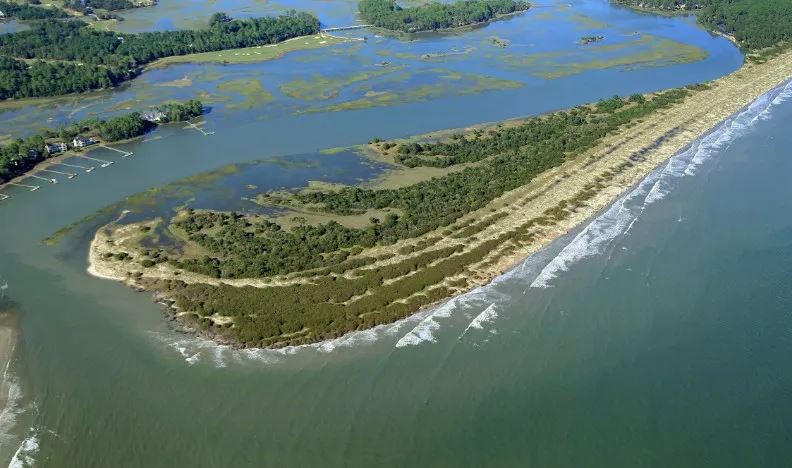
This blog has discussed “Captain Sam’s Spit” in Kiawah Island three times before. Googling that picturesque name will reveal a treasure trove of news, opinion and case law involving the proposed development of a beautiful and extremely precarious tract of pristine beach property on South Carolina’s coast.
In the news, reported by WCSC- TV (Charleston), the town of Kiawah Island, the Kiawah Island Community Association, and the Kiawah Conservancy filed a breach of contract suit against KDP II, LLC, the owner of the spit. According to the reporting, the lawsuit alleges that a 2013 development agreement required KDP to deed a portion of the property to the Kiawah Island Community Association as community open space and to place all remaining undeveloped lands under a conservation easement to be held by the Conservancy.
The most recent blog discussed the 2021 Supreme Court case the latest case* in which the Court refers to the property as one of our state’s only three remaining pristine sandy beaches readily accessible to the general public. The other two beaches are Hunting Island State Park and Huntington Beach State Park. I enjoy the blessing of walking the pristine beach of Huntington Beach State Park on a regular basis, so despite having a career on the periphery of real estate development, I am in favor of maintaining these three state treasures.
The South Carolina Bar’s Real Estate Intensive seminars have included field trips to Captain Sam’s Spit, from a distance at least. Professor Josh Eagle of the University of South Carolina School of Law was an excellent tour guide, and how many opportunities do we, as dirt lawyers, have for field trips? The South Carolina Environmental Law Project, located in Pawleys Island, fights these cases. Amy Armstrong, an attorney with that entity, joined our group to explain the environmental and legal issues.
Here are greatly simplified facts. Captain Sam’s Spit encompasses approximately 170 acres of land above the mean high-water mark along the southwestern tip of Kiawah Island and is surrounded by water on three sides. The Spit is over a mile long and 1,600 feet at its widest point, but the focal point of the latest appeal is the land along the narrowest point (the “neck”), which is the isthmus of land connecting it to the remainder of Kiawah Island. The neck occurs at a deep bend in the Kiawah River where it changes direction before eventually emptying into the Atlantic Ocean via Captain Sam’s Inlet.
The neck has been migrating eastward because of the erosive forces of the Kiawah River. The “access corridor”—the buildable land between the critical area and the ocean-side setback line—has narrowed significantly in the past decade to less than thirty feet. Googling this issue will lead to active maps which show the change over time. The width of the neck is significant because the developer needs enough space to build a road. At the base of the neck is Beachwalker Park, operated by the Charleston County Parks and Recreation Commission. Our fieldtrips were conducted on that Park.
Twice before, the administrative law court (ALC), over the initial objection of DHEC, has granted permits for the construction of an extremely large erosion control device in the critical area. In both cases (citations omitted), the Supreme Court found the ALC erred. The 2021 case arose from the ALC’s third approval of another structure termed “gargantuan” by the Supreme Court—a 2,380-foot steel sheet pile wall designed to combat the erosive forces carving into the sandy river shoreline in order to allow the developer to construct the road to support the development of fifty houses. The Court again reversed and, in effect, shut down the proposed development, at least temporarily. The economic interests of an increased tax base and employment opportunities do not justify eliminating the public’s use of protected tidelands, according to the Court.
I wouldn’t be surprised to see future appellate court cases involving this property.
*South Carolina Coastal Conservative League v. South Carolina Department of Health and Environmental Control, South Carolina Supreme Court Opinion 28031 (June 2, 2021)
